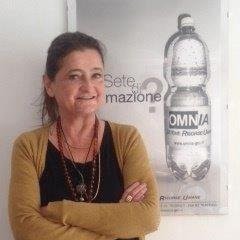RESEARCH AND SELECTION OF STAFF
The course aims to examine the characteristic and critical aspects of the implementation of a Total Reward system; define a Compensation & Benefits policy that is in line with the business objectives.

Course professor:
Paola Viano
Objectives
The course aims to present in depth the entire personnel selection process, starting from the analysis of the fundamental principles and purposes of this activity, passing through the different phases of the process and the theoretical-practical illustration of the tools and methodologies used, up to the point of focusing the attention of the participants on the professional novelty represented by the possibility of recruiting through the use of tools related to new technologies (Internet, webcam, etc.).
Recipients
The course is aimed at undergraduates and recent graduates and at junior figures in the personnel management who wish to deepen their knowledge and skills on the subject. Number of participants: from a minimum of 2 to a maximum of 12.
Program
- The traditional selection process and the online selection process compared
- The phases of the personnel selection and recruitment process:
Definition of the job profile
- Analysis of the position and needs in relation to the organizational climate (the various types of “culture” organizational) – identification of the characteristics of the position and the role to be filled
- Determination of knowledge and skills and personal behavioural characteristics indispensable for the role sought
- Identification and involvement of stakeholders in the recruitment and selection process
- Profile description of the ideal candidate
- Research, experimentation of sources and communication to the labour market
- Spontaneous questions / Archive
- Presentation through other candidates
- Job posting
- Advertisements on bulletin boards, shops
- Internship
- Universities and schools
- Head Hunter
- Media advertisement (daily, weekly …)
- Internet: how to build a successful advertisement on the Internet
- Pre-selection and screening of CVs
- The query of the database: the email match of the CVs with the job profile
How to read CVs and traditional cover letters:
- The school curriculum
- The work curriculum
- Work reasons
- Non-working interests
- Analysis of the family situation
- Character aspects
The “formats” of online research and selection companies
- Telephone screening of applications
- Convocation of candidates
- Selection of applications
- Which methodology to adopt for the evaluation of candidates?
- The tests: which ones to adopt (of intelligence, personality, aptitude…) and how to use them correctly
- Group dynamics: when to use them and on what type of candidates
- The individual interview: the free interview and the structured interview
- The selection interview and its phases
- Preparation
Management and choice of the best style (friendly, professional, stress interview …)
- Closing
- Evaluation of the candidate
- Errors to avoid during the interview and during the evaluation
- The candidate’s defense mechanisms
- Definition of the shortlist of suitable candidates and presentation to the “line”
- Acceptance and insertion of new hires
- The tools for orientation
- The insertion plans
- Visits and meetings with the various company functions
- The evaluation of the trial period
- Feedback to unsuitable candidates
The ideal interviewer:
- How to talk to the candidate (open, semi-open, closed questions …)
- Knowing how to listen
- Non-verbal communication (gaze, gestures, posture, mimicry, proxemics, close of
hand, etc.)
Didactic Methodology
The teachers will offer various exercises, in addition to the analysis of practical cases and the comparison and use of specific tools and methodologies.
Teaching materials
At the end of the course all participants will be provided, in digital format, with all the material used in the classroom (slides, exercises, case histories, etc.).
Duration
3 half days in webinar mode
